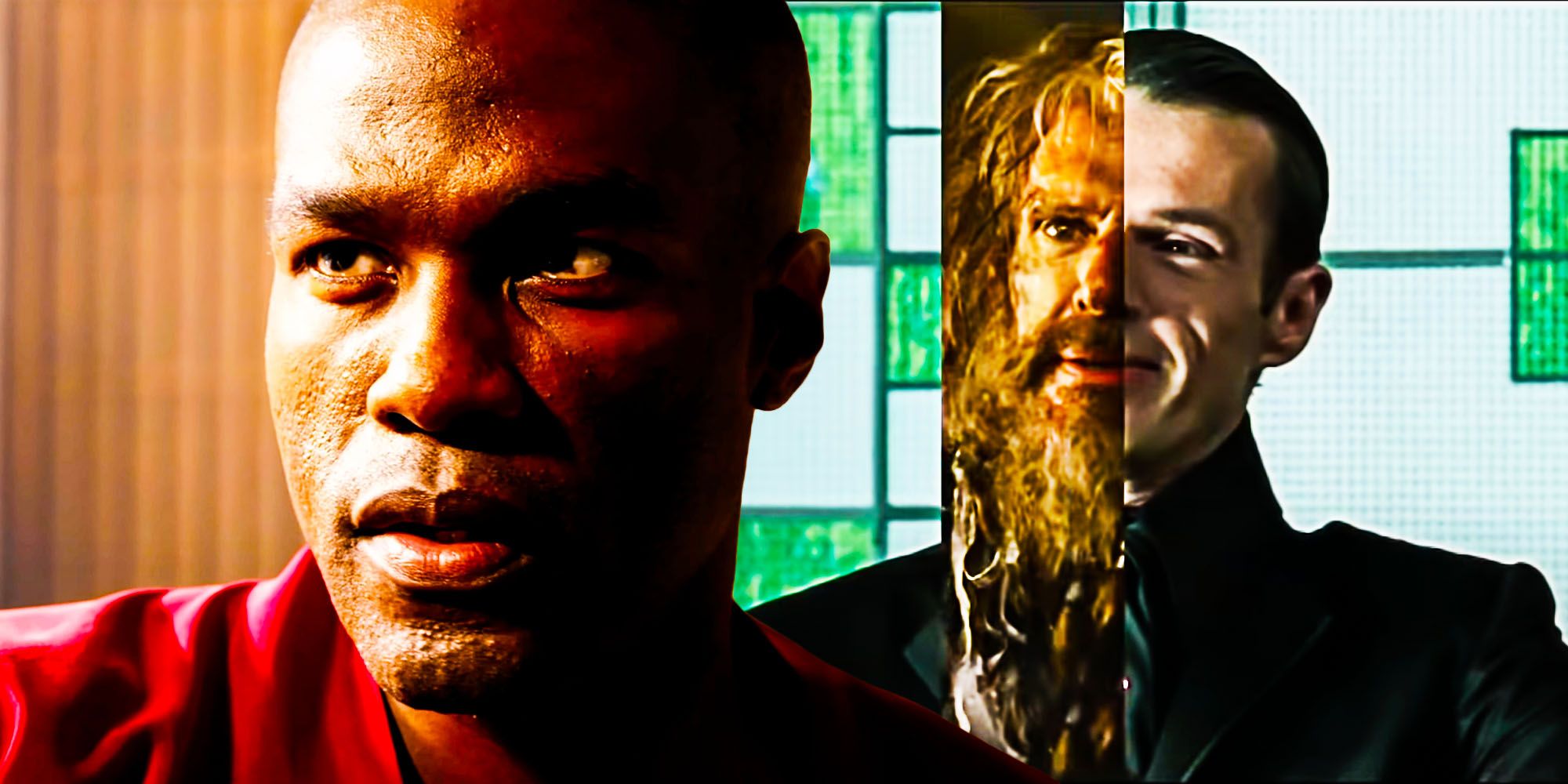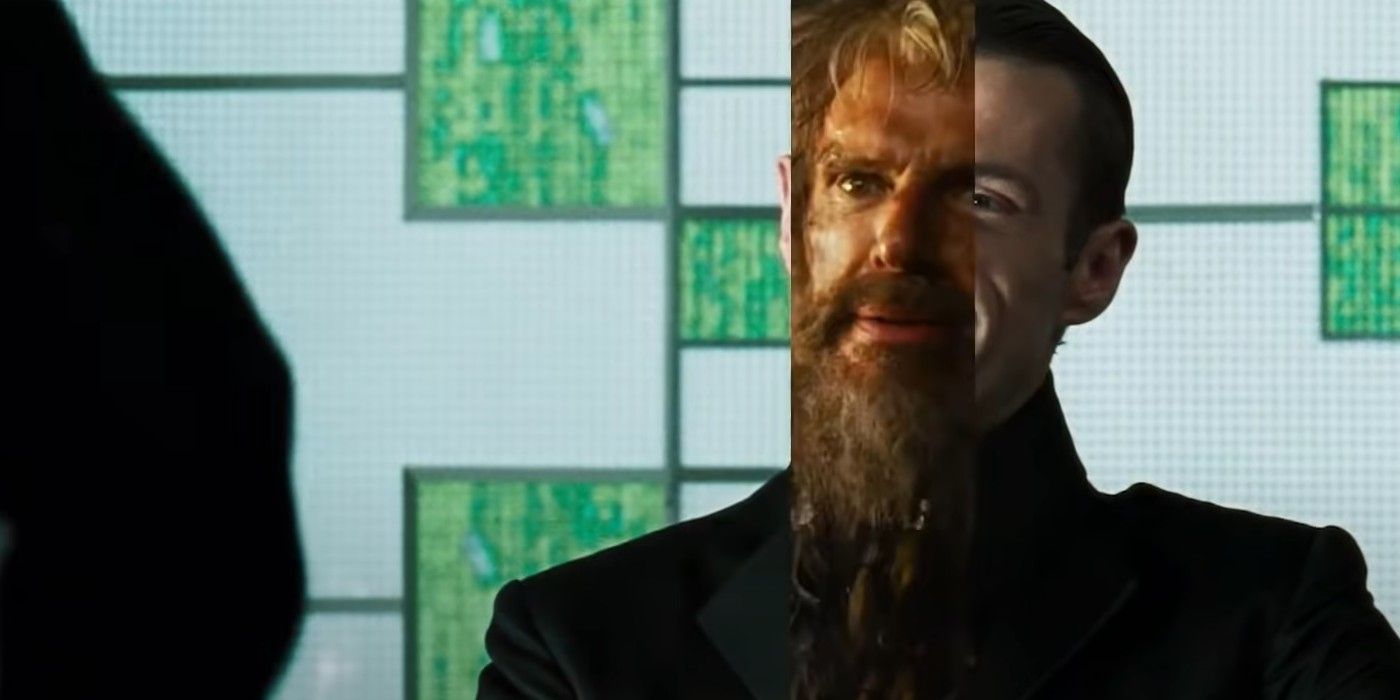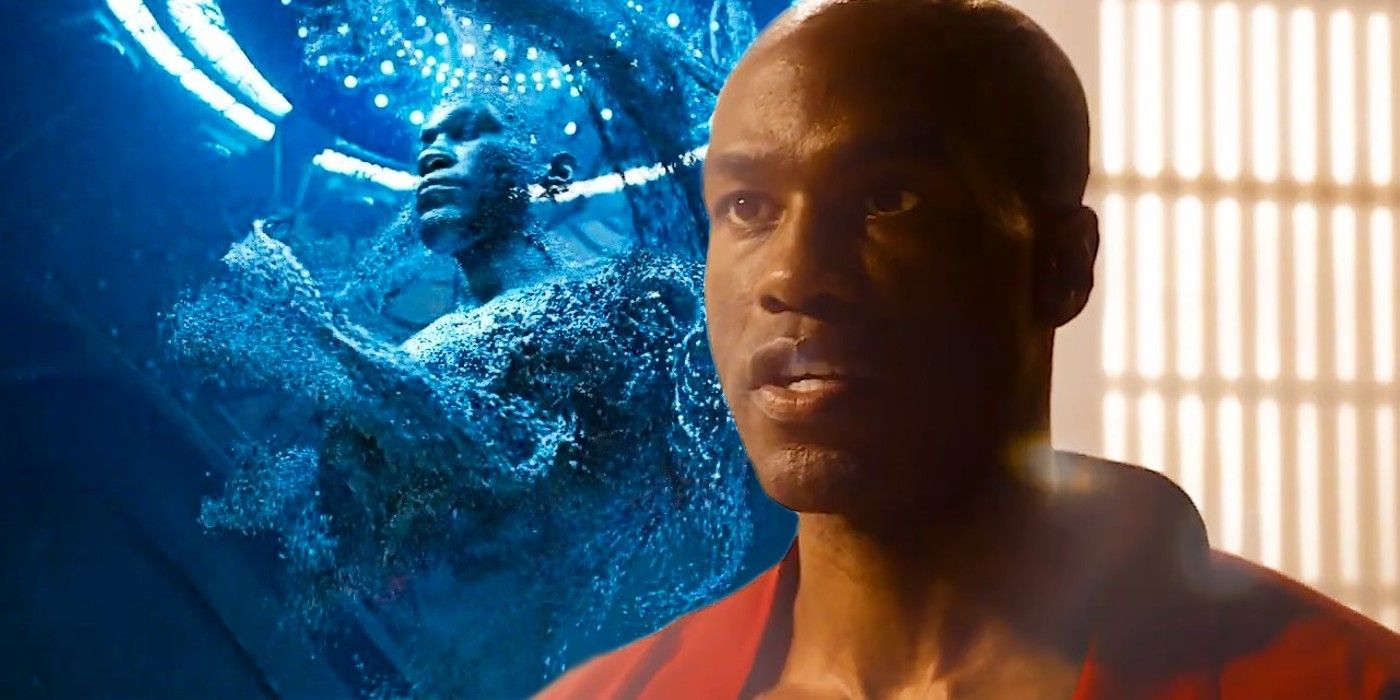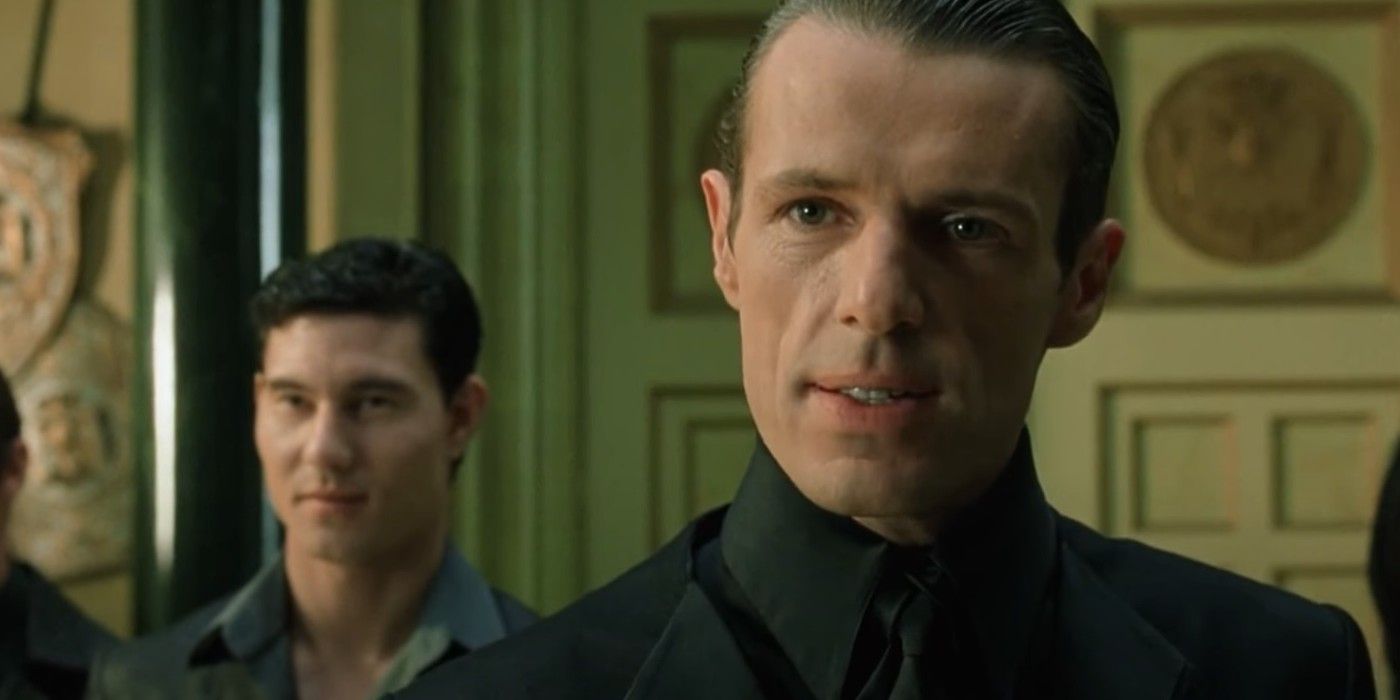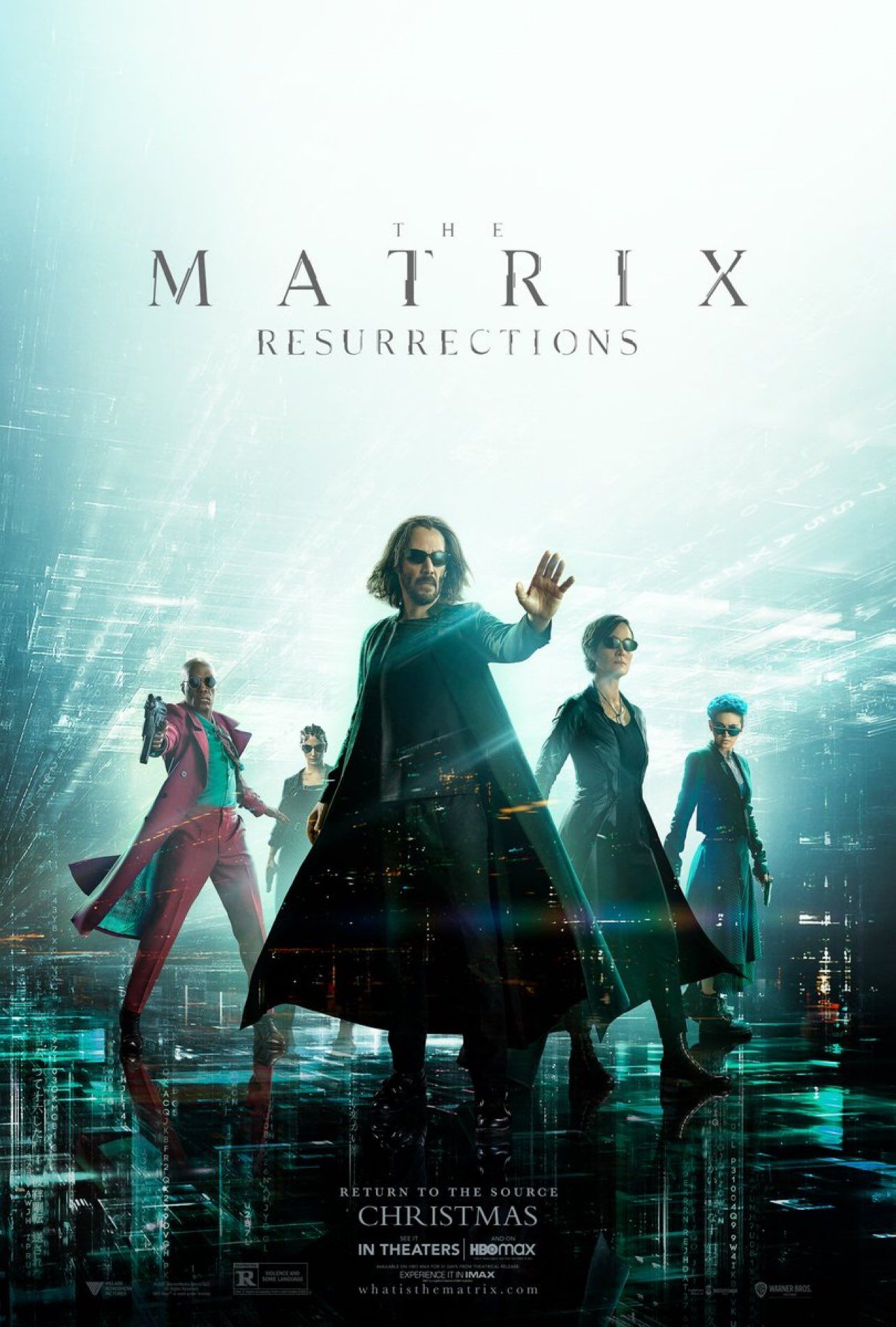Time is relative in The Matrix Resurrections, but why does the upcoming sequel's returning Merovingian look older, when Morpheus has got younger? When Warner Bros. confirmed Lana Wachowski would be directing a brand new Matrix movie almost 20 years after the original trilogy concluded, no one seriously expected her to write a conventional sequel. Sure enough, The Matrix Resurrections' peddles a curious mixture of brand new characters and old favorites, as well as strikingly modern imagery alongside déjà vu moments that intentionally mirror Neo's debut in 1999.
Adding to the confusion, The Matrix Resurrections' returning characters haven't all aged as you'd expect. Keanu Reeves' Neo and Carrie-Anne Moss' Trinity both look older, even though their characters were very much dead last time we saw them. On the other hand, Yahya Abdul-Mateen II's Morpheus is clearly younger than the others - odd, considering he was actually still alive when The Matrix Revolutions ended.
Promotional material has now revealed another familiar face - Lambert Wilson's Merovingian. A digital organized crime boss in charge of the Matrix's many exiled programs, the Merovingian appeared in both 2003 sequels. Like Reeves and Moss, Wilson is obviously older in The Matrix Resurrections, and this is reflected in his character. Unlike Reeves and Moss, Lambert Wilson plays a digital program who surely shouldn't be aging - especially when folk like Morpheus come back so fresh-faced. Why does the Merovingian look so different, and does his new physical appearance prove a popular Morpheus fan theory?
The Older Merovingian Foreshadows A Matrix Power Shift
However easy Marvel makes digital de-aging seem (sometimes, at least), filming The Matrix Resurrections so long after The Matrix Revolutions inevitably means original cast members look older. The trick is how to logically explain that visual difference in canon terms, and there are plenty of theories as to why Neo and Trinity have matured in The Matrix Resurrections.
Most of those theories rely on the heroes' human biology to work, which makes The Merovingian's new look all the more intriguing. Not only are digital programs ageless, but the Merovingian was already one of the most ancient characters in the original Matrix trilogy. Why are the years suddenly taking their toll on him now? As a program, The Merovingian's code can be rewritten depending on his function, and in previous films, his function was akin to a crime boss. Smuggling obsolete programs to safety and selling information gathered across centuries of existence, The Merovingian crafted a digital playground full of fine food, strong henchmen, and beautiful lovers. The kingpin of the Matrix's underworld, The Merovingian's flamboyant programming was represented by his outward appearance inside the simulation - sharp designer tuxedos, perfectly manicured hair, flawless posture, etc.
The Merovingian we see in The Matrix Resurrections is entirely different. He has long, unkempt hair and a scruffy beard to match. His face is visibly older than before, and judging by his attire, could even be living on the streets in this new iteration of the Matrix. Because a digital program doesn't starve, tire or age, the reason for The Merovingian's rougher, worn exterior must be an alteration to his purpose in The Matrix Resurrections. Maybe whoever's calling the shots in this timeline had no use for a kingpin, so promptly relegated The Merovingian to wandering the streets. Or perhaps after Neo struck a truce with the Machines to end human enslavement, The Merovingian became obsolete, which the simulation now reflects visually by making him older and less pristine.
Older Merovingian Proves Matrix Resurrections' Morpheus Must Be A Program
In early trailer footage, Yahya Abdul-Mateen II's character is seen "assembling" himself under a strange blue light - millions of tiny atoms coming together to build his body. Immediately, this suggests Morpheus is a digital program, no longer human, in The Matrix Resurrections. Still, that doesn't explain why the reconstruction hasn't done the obvious thing and produced Laurence Fishburne. The idea of programs adopting physical forms that reflect their roles in the Matrix could explain how Morpheus hasn't aged whatsoever in The Matrix Resurrections.
Just as The Merovingian's disheveled visage may prove his lack of importance to the Matrix's new hierarchy, Morpheus looking younger and fitter than he should in The Matrix Resurrections suggests Zion's hero has a vital role to play. That means the original human Morpheus is long dead, but the Machines kindly retrieved his personality and memories from the Matrix's recycle bin and uploaded them into a physical body befitting of his new mission.
Almost as if supporting this theory, Morpheus can he heard saying, "Why use old code to mirror something new?" in trailer footage. Morpheus and The Merovingian are both examples of pre-existing code in the Matrix, and they're each mirroring something new in The Matrix Resurrections - especially that trailer shot where Morpheus places his hand into a mirror that warps around him. The Merovingian went from a flamboyant and influential leader to a homeless man on the street, while Morpheus transcends from being dead (or at least very old) to peak human health. The common denominator is that both men are programs, and the Matrix is presenting them as it sees fit.
That same theory can explain why Trinity looks older in The Matrix Resurrections too. Similar to Morpheus, trailer footage hints toward Trinity being a digital character in the franchise's latest installment, but she followed The Merovingian's aging path, rather than Morpheus and his fountain of youth. Trinity's aging might be designed to copy how Neo, her One true love, has grown older. Shots of Neo's body being rebuilt by Machines imply he ages naturally in The Matrix Resurrections, so maybe the Matrix constructs Trinity to match his maturity.
How The Merovingian's Appearance Teases His Matrix Resurrections Role
There's a very intentional duality to The Merovingian's new style in The Matrix Resurrections. Meeting Neo in The Matrix Reloaded, Lambert Wilson's character was surrounded by wealth, greed, followers and security. In a 2021 shot framed almost identically, The Merovingian is now alone, humbled, dirty and vulnerable.
If The Matrix Resurrections is retreading the plot of the original trilogy, however, The Merovingian's contribution to the tale could, once again, be providing Neo with information. Previously, this meant Neo, Trinity and Morpheus had to liberate The Keymaker from The Merovingian's capture. But with everything turned upside-down and The Merovingian now a shadow of his former self, his task in The Matrix Resurrections might be helping Neo liberate The Keymaker from another villain - a measure of redemption for the erotic cake enthusiast.
It's a fascinating parallel to have two very different iterations of The Merovingian both possessing information Neo requires before he can save the world. The first time around, this information came from being an ancient and highly-respected program; in The Matrix Resurrections, it may be because The Merovingian watches on unnoticed as the Matrix continues on without him - the total opposite of Yahya Abdul-Mateen II's Morpheus, who's back and better than ever in a younger body.

